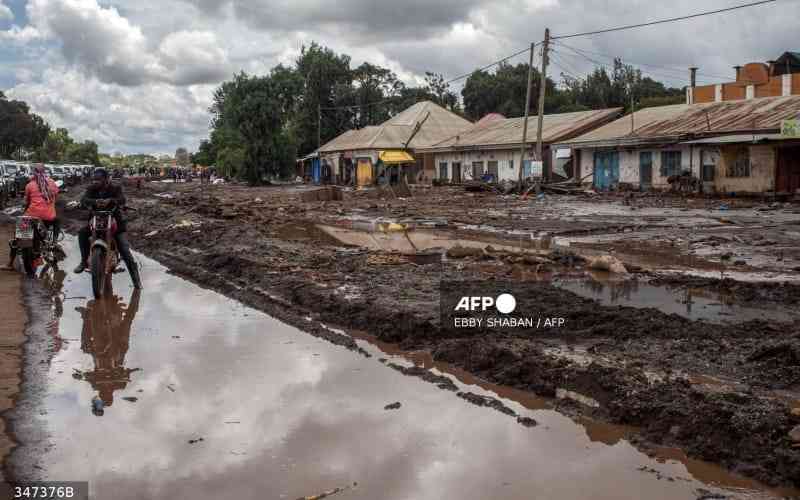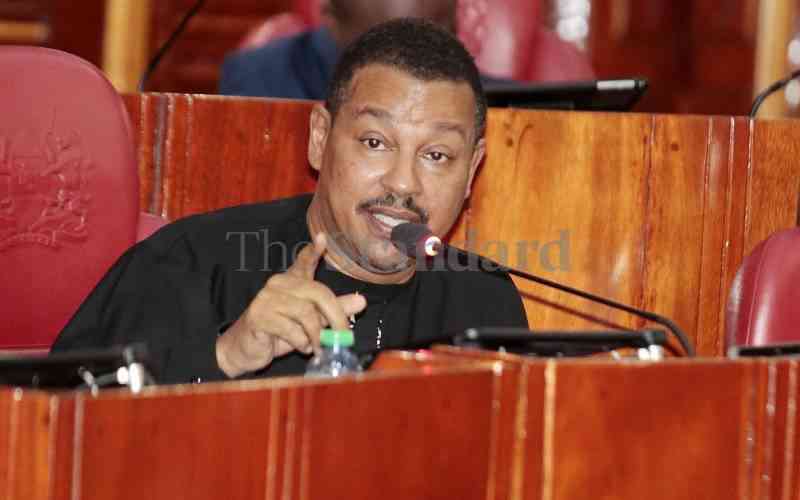This book was published last year in Kenya. Its foreword was written by Olusegun Obasanjo. It is written in simple and clear English. Its tone and themes are very captivating. It has 958 pages, with a list of index it comes to more than a thousand pages. This large number of pages must be a hindering factor to its mass readership in Kenya. Given the Facebook, Twitter and Whatsapp as well as Instagram culture in Kenya, where nowadays people prefer reading through short digital passages rather than wriggling through the buckling weight of a book with a thousand plus pages. This must also be the reason why this book has not been a subject of public discussion since its launch one year and some few months ago. Talking to a bookseller in Eldoret who sold me a copy of this book at a price of Sh3500, he said that the price is also a barrier to mass readership of the book as most Kenyans are not ready to part with this much for a book.
Personally I have finished reading the book. I appreciate some strengths displayed by the author. At most, the authors’ display of the good memory in regard to the nuanced facts and details, most of them have been forgotten by the people of Kenya. Intellectual audacity and depth of research virtuously comes out on each and every page. Kudos, honourable Raila Odinga.
In contrast, there are some historical facts deliberately falsified by the author, or may be the author wanted to take a controversial position in the political sense. Firstly, the author portrayed the historical impeccability of the Odinga family. He was able to see and explain clearly the mistakes of other people, but he could not see one single political mistake committed by the Odinga family as represented by Jaramogi, and then the author, Raila Odinga. The author could not see a technical mistake committed by Jaramogi Oginga Odinga for declining to assume Kenya’s presidency at independence on the pretext that he wanted Jomo Kenyatta to be released from prison first. Here Jaramogi misapplied the science of power and politics, a mistake that punitively followed him in entirely in his life.
The author falsified historical facts in relation to the 1982 coup attempt, by showing that he never participated anywhere in the coup process. This is in sharp contrast with historical facts and evidence. Reading, Kenya; Between Hope and Despair by the British historian, Daniel Branch, it is revealed that during the 1982 coup attempt , Raila Odinga in a company of other rebels in support of the coup were in charge of command post number seven, which was located on Lang’ata road. They controlled the movement of vehicles and human traffic coming into and going out of Nairobi City center. Both Branch and Raila Odinga owe the reading society an explanation to help in showing the right and the wrong. Presentation of facts on the corporate social responsibility by the Kisumu Molasses factory is another area of false facts. The point that Kisumu Molasses plant carries out a free medical camp for the local community, where there are free medical services to the community in every three months is not verifiable. Experience in the public domain since establishment of the Kisumu molasses plant is otherwise.
Terribly falsified is Raila’s synopsis of the political career of the former vice president Michael Wamalwa Kijana. The arguments in Raila Odinga’s book that Wamalwa used to live beyond his means, that Wamalwa only joined politics by starting out as member on the funeral committee preparing for the burial of Masinde Muliro, that Jaramogi was the one paying rent for Wamalwa, That Jaramogi was the one who funded farming activities on Wamalwa’s farm at Kitale,that Wamalwa finished a legal training but not training in Law at London, that Wamalwa was sacked at the University of Nairobi because he faked marks for students and that Wamalwa died indebted and his debts were only settled through parliamentary vote are not true. They are only emotional and political overtones of the author.
On history of media freedom in Kenya the author was alright. The point of objection is where the author claimed that the entire media fraternity in Kenya to have failed being objective in 1992.The fact is that, when the media pointed out Luo and Gikuyu ethnicity in Ford Kenya and Ford Asili respectively during the 1992 political socialisations in Kenya was not a deviation from media objectivity. It was a fact observed that time. The author also blames the Gikuyu media like Finance, then edited by Njeu Gatabaki and the Weekly Review, then edited by Hillary Nweno to have perpetrated tribal chauvinism in Kenya’s politics. Surprisingly, on this platform, the author did not mention, the vernacular Luo news paper Rameng Piny, neither did he mention its editor, despite the fact that this paper was the most selling in Nairobi and Kisumu during those days .
 The Standard Group Plc is a
multi-media organization with investments in media platforms spanning newspaper
print operations, television, radio broadcasting, digital and online services. The
Standard Group is recognized as a leading multi-media house in Kenya with a key
influence in matters of national and international interest.
The Standard Group Plc is a
multi-media organization with investments in media platforms spanning newspaper
print operations, television, radio broadcasting, digital and online services. The
Standard Group is recognized as a leading multi-media house in Kenya with a key
influence in matters of national and international interest.
 The Standard Group Plc is a
multi-media organization with investments in media platforms spanning newspaper
print operations, television, radio broadcasting, digital and online services. The
Standard Group is recognized as a leading multi-media house in Kenya with a key
influence in matters of national and international interest.
The Standard Group Plc is a
multi-media organization with investments in media platforms spanning newspaper
print operations, television, radio broadcasting, digital and online services. The
Standard Group is recognized as a leading multi-media house in Kenya with a key
influence in matters of national and international interest.







